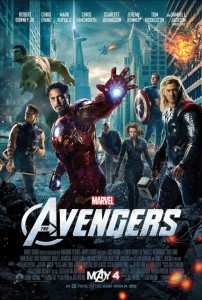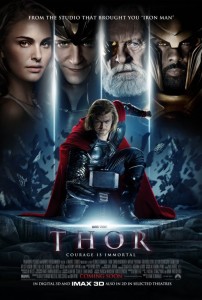This is a review of a “Fan Edit.” Details of the original film, including twists and the ending, may be revealed.

How do you follow Raiders of the Lost Ark? George Lucas and Steven Spielberg couldn’t figure it out, so they ended up with Indiana Jones and the Temple of Doom, the weak link in the trilogy documenting the adventures of cinema’s all time most entertaining archeologist.
The story has Indy (Harrison Ford, in case you’re not paying attention), one year before his search for the Ark of the Covenant, crash landing in India with a brainless, blonde singer, who—for reasons known only to George Lucas—goes by the name Willie, and a precocious Chinese kid. Assumed to be saviors sent by holy forces, the three set off to rescue the kidnapped children of a village and recover a magic rock.
I suppose that had I stumbled upon this film, an unknown action tale of a no name professor and two annoying sidekicks battling nineteenth century stereotypes, I might have found it an appealing way to lose a few hours on a Saturday afternoon. It is far from a perfect movie, but it has some fun moments, as long as you aren’t expecting much. But this isn’t an unknown film about an unknown character, and it was, and still is, a great disappointment.
Since I’m looking at the flick in terms of its potential as a source of fan edits, I’ll forget about what worked, and focus on where it went wrong:
- A rambling narrative without a mythic goal.
- A weak, shallow, female lead.
- A child Man Friday (For God’s sake, why not just give Indy a puppy and be done with it).
- Juvenile humor that doesn’t even work on its low level.
- A villain that appears half way through the movie and is never given a personality.
- Action sequences that go on too long, and, since they exist purely for the sake of spectacle, do not engage the viewer’s emotions.
- An unbelievable romance that—since this is a prequel—we know will never amount to anything. (Sure, he wants to get laid, and she’s cute enough. That’s fine. But why must they have some deep connection when there’s no way these two could care about each other on anything but a physical level?)
- A racist portrayal of India and its inhabitants.
- No sense of urgency or feeling that all of this matters (tossing a bunch of children into danger is a cheap way to raise tension, and in this case, this clichéd device doesn’t do the trick).
Indiana Jones and the Temple of Doom: The ADigitalMan Edit 
Editor: ADigitalMan. Runtime: 113 min (-5 min). 2006.
A gentle edit, ADigitalMan doesn’t try to change Indiana Jones and the Temple of Doom, but merely tweak it. He pulls back some of the most absurd moments. It’s amazing how much better he makes the film with so little cutting.
Partly, that’s due to the skill of the edits. They’re perfect (at least for viewing on a 36 inch TV with a home stereo set at 5. I couldn’t find a single jerking movement, out of place sound, or mismatched musical moment. As far as what is on the screen, the cuts could have been done by original editors Michael Kahn and George Lucas. With only a DVD to work from, this is amazing. I had to run the studio edition simultaneously to determine where each alteration was made.
Of course skill bows to artistry, and here ADigitalMan also shows top form. Everything that has been removed, should have been removed. Mainly, it is the out of place, failed humor of Willie that’s now on the floor. She screams less, whines less, comments on her fingernails less, and says fewer ridiculous lines. This doesn’t make her a stronger character, but she is less annoying. The most significant change is in the dinner scene. Before, Indy’s serious discussion (read: exposition time) was broken up by Willie doing sitcom reactions to nauseating food items as they are brought to the table. I can’t say why Lucas and Spielberg thought that people eating eels and giant bugs would be entertaining, or that Willie almost vomiting would be hilarious, but I can say that once again, they were mistaken. ADigitalMan removes a majority of the poorly conceived food humor, keeping only what is needed for continuity: the first snake dish is still served, and Willie still faints at the sight of the monkey brains. This makes the scene about Indy, which is pretty clever in an Indiana Jones movie.
With such effusive praise for ADigitalMan’s editing skills, you might think that I was going to stamp this work an unqualified success. Ah, you don’t know me well. While all the cuts are good ones, the project was too conservative. There are still too many horrible moments with Willie, at least some of which could have been removed (the “romance” would have been a good place to start). And while Willie has the most cringe-worthy lines, Short Round, Indy’s pidgin-English spewing child companion is close behind. Unfortunately, his part is almost untouched. A minute or two less of him yelling “Doctor Jones” would be an immense improvement. And I’d be happy never to again hear:
“Okey dokey Doctor Jones. Hold on to your potatoes.”
“D’is is fun!”
“Very funny. Ha ha ha, very funny. Ha ha ha, all wet.”
“Not my fault. Not my fault. Not my fault. Not my fault.”
ADigitalMan has made a more watchable version of a flawed film. I see no reason to ever pick up the original again. But he has left room for another editor to step in and improve upon his work. I wonder what George Lucas is doing now-a-days.








